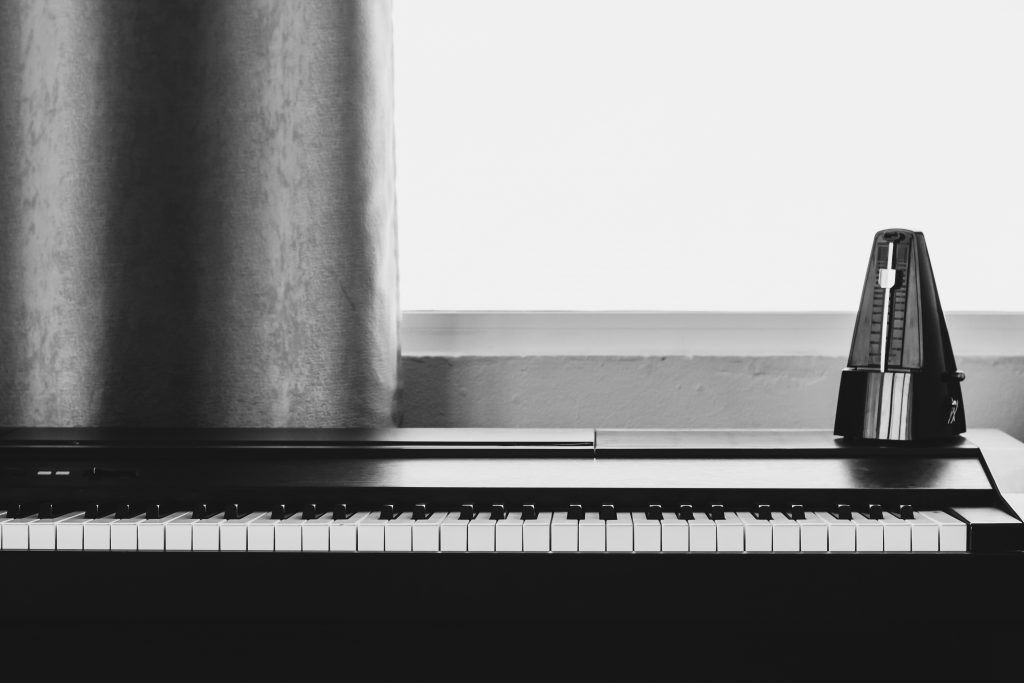Piano practice time is a precious commodity for most of us. There just aren’t enough hours in the day! Interestingly, concert pianists typically clock up hundreds of hours per month in search of perfection. For those of us who don’t have that amount of time available, it’s doubly important to make every precious minute of piano practice count.
Not only will your playing improve, but you’ll get more value from piano lessons too. The innovative features of a digital piano can help. Even the most advanced player can get more from practice time and enhance their playing ability.
1. Sit Comfortably and Warm-up
Before you play, whether it’s piano practice or performance, adjust your seat to the correct height and distance from the keyboard. This ensures your arms and elbows are relaxed and comfortable. Always ensure they are not rigid or lifted, which could hinder your playing. Begin with a warm-up exercise, such as hands separate. Also, make it a rule to start with the left hand, as it is often overlooked.
Advanced Tip: Your warmup should be focused on solving particular technical issues. It’s a good practice to spend time performing exercises and relaxation techniques. Do this alongside scales and arpeggios.
2. Play Often for Best Results
It’s tempting to skip practice for five days and put in a mammoth session the day before a lesson. Even fifteen minutes per day is more beneficial to muscle and mental memory than two hours once a week. Make it a habit, and you’ll be surprised at the difference it makes.
Advanced Tip: Goal-based practice can give a much stronger sense of achievement and direction than playing for an allotted time. Set achievable goals, no matter how small. Try mastering one hand slowly. Then, work towards larger goals in future sessions.
3. Use a Metronome to Improve Timing and Rhythm
Even the best players sometimes speed up during familiar passages and slow down when the going gets tough. They might not notice, but an audience always does. The only way to counteract this is to practice with a metronome. Digital pianos almost always have a built-in one.
Advanced Tip: If your rhythm needs work, try tapping against the metronome then playing the notes that land on the beats.

4. Separately, Slowly, Sections
It’s impossible to concentrate properly when both hands are playing something unfamiliar. Start with hands separately and make sure your dominant gets as much attention as the other.
Slow the tempo down on the metronome. Ensure that each note is sounded properly, with the right dynamics and timing. This will also give your muscle memory a chance to learn the fingering. Only when it’s completely secure should you gradually increase the speed.
Advanced Tip: If you have a teacher, they can split a long piece into sections for you. Don’t always start from the beginning of the piece. Make sure you’re just as familiar with the middle and the end. This will help keep it interesting and motivate you to perfect your performance.
5. Analyze your Performance with Headphones
If you’re an advanced player, you may find yourself focusing on one piece for quite some time. Using headphones on a digital piano will focus your attention and help pick out technical issues with your playing. They will also help keep your family and neighbors happy when you’re playing the same piece for the hundredth time!
Advanced Tip: Digital pianos sometimes have twin sockets so your teacher can listen using headphones. This will help assess your performance in greater detail.
6. Record, Listen, Learn
A week is a long time, and many students don’t listen while they’re not practicing. If you’re having lessons, your teacher will correct you. Still, by then a habit can become ingrained. Concentrate on every aspect of your playing: tone, timing, and dynamics.
Digital pianos often have a built-in feature to record your performance. Play it back and identify problems early during piano practice.
Advanced Tip: Recording is extremely useful once you start looking at the more expressive side of playing. Record a passage, then read the music, envisioning what it should sound like. Next, play the recording and compare. This will help identify tempo and expression issues, maximizing piano practice.
The advanced features of a digital piano can help players of all levels maximize playing ability, monitor techniques, and get the most from lessons with a teacher. Dedicating energy to practice will both save money and ensure that every minute counts.







